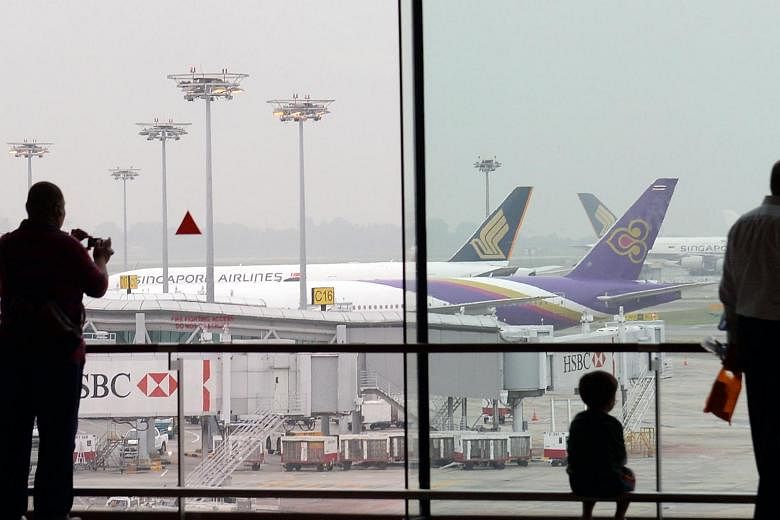SINGAPORE - Asean has taken key steps to integrate its skies, giving travellers more flight options within the region, and industry players more opportunities to benefit from the growth in the demand for air travel.
At the close of the 23rd Asean Transport Ministers Meeting in Singapore on Friday (Oct 13), member states inked five initiatives and adopted six, reaffirming the bloc's commitment towards enhancing transport cooperation not just within the region but also with partners, including China.
In an update, Singapore's Transport Ministry (MOT) said deals inked included the adoption of the Asean Air Traffic Management Master Plan to facilitate aircraft movement across the region in a more integrated and harmonised manner.
When fully realised, this should enhance airspace capacity and safety, reduce flight delays and lower operational costs for airlines, the ministry said in a press release.
Ministers also signed two agreements to liberalise air services in the region.
The first is to allow domestic code-share rights between points within the territory of any Asean member state.
This means that a Singapore carrier, for example, can partner an Indonesian airline to offer Singapore travellers a single booking for a Singapore-Jakarta flight, and from there, to another Indonesian destination operated by the Indonesian carrier.
This will allow Asean airlines to expand their international networks without deploying their own aircraft, the release said.
For travellers, it will mean more flight options and convenient transfers from one airline to another.
The cooperation will enable the greater movement of people and goods, benefiting our economies and businesses, and expanding tourism, MOT added.
The second agreement seeks to progressively reduce restrictions on trade in air transport ancillary services within Asean.
This includes, for example, fewer restrictions for firms that may want to offer ground-handling services at airports based in other Asean states.
In the area of manpower development, Asean states have also agreed to mutually recognise licensing requirements for flight crew, including pilots.
This will make it easier for licences to be validated or converted, paving the way for more convenient transfers for flight crew who may want to join another Asean carrier.
Outside the region, Asean and China also inked a memorandum of understanding to boost cooperation among the authorities that oversee aircraft accident investigations.
This will pave the way for the sharing of investigation facilities and equipment, as well as expertise.
To facilitate land transfers, the Asean Framework Agreement on the Facilitation of Cross Border Transport of Passengers by Road Vehicles was inked to make it easier for buses to move between borders.
This will make it more convenient for commuters, and also create more commercial and investment opportunities for transport and other firms, MOT said.
Speaking at the closing ceremony of the 23rd Asean Transport Ministers Meeting, Mr Khaw Boon Wan, Coordinating Minister for Infrastructure and Minister for Transport, said that closer cooperation between members states "will make a real difference to raising the quality of life for our people, creating good paying jobs and contributing to peace and stability in the region".
The next meeting will be held in Thailand next year.


